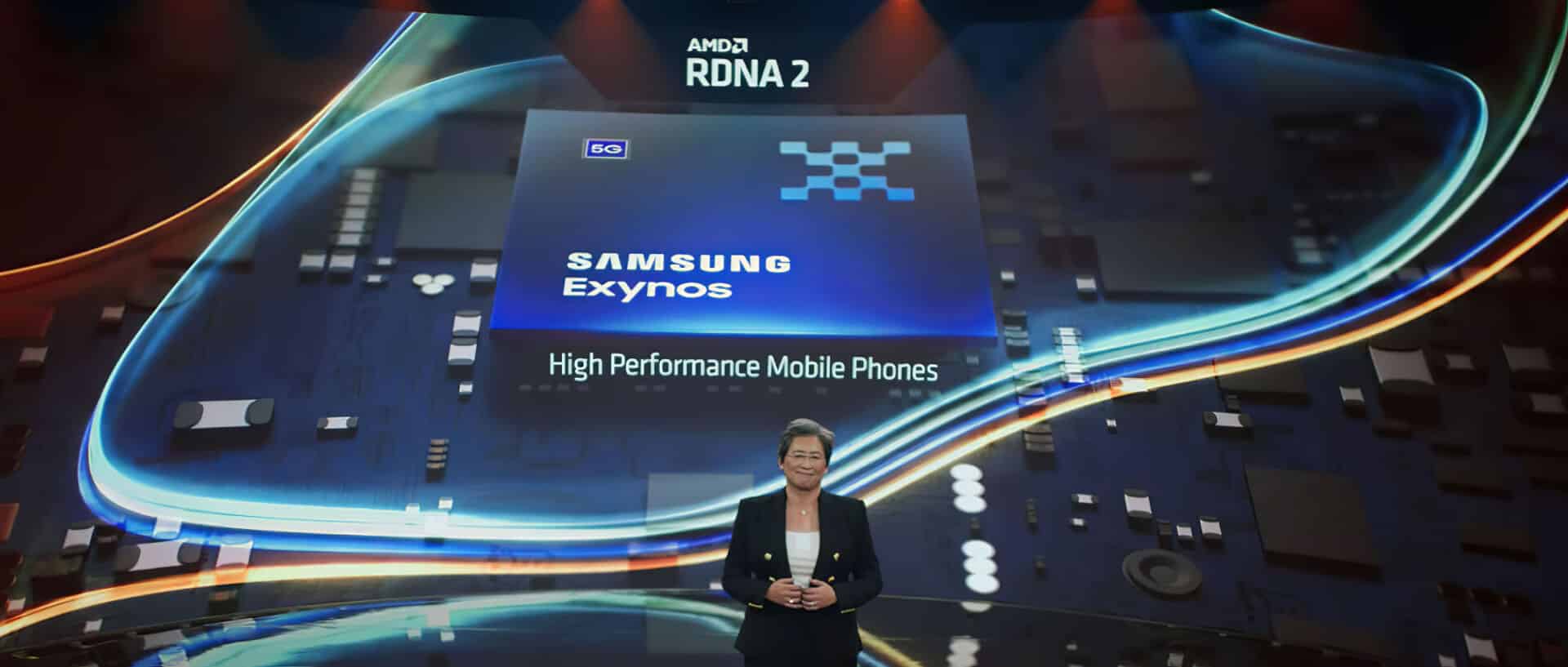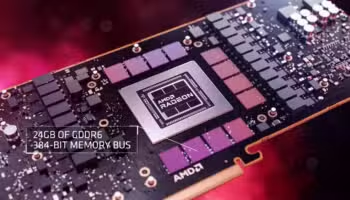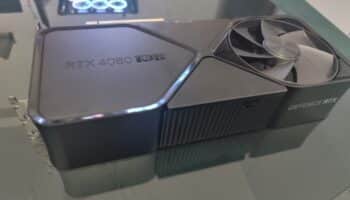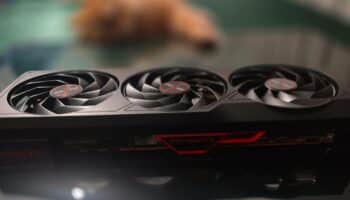The latest news from Taiwan indicates that internal testing of AMD’s mobile RDNA GPU on the Exynos 2200 is proceeding well. In the latest round of tests, the Exynos SoC meant for the Galaxy S22 has gotten a GOS (Game Optimizing Service) uplift, alleviating throttling when the service is enabled. It’s worth noting that GOS limits the max boost clock to roughly 50% of the overall frequency, but it’s still more performant than the throttled clocks.
The mRDNA GPU on the Exynos 2200 is presently being tested with a boost clock of 1.29GHz. With GOS, the max clocks drop to 600-700MHz, but these figures are still higher than previous tests where the GPU would throttle to 30% of its peak clock.
Earlier Samsung and AMD were debating whether to apply GOS to the mRDNA GPU-equipped Exynos 2200 SKUs. AMD had applied a patch that prevented third-party tools like GOS that alter the clock speeds or the frequency governor. Samsung’s stance was that GOS improved the gaming experience by dynamically adjusting clocks and should be patched in.
However, AMD countered that the patch was not (specifically) targeted at Samsung’s GOS and was implemented across all mRDNA GPUs. The reason being that GOS and other related tools adversely affected the GPU performance, preventing them from unleashing their full potential.
Furthermore, AMD explained that the Radeon mobile driver optimized clock levels as per the workload (without 3rd party tools), causing instabilities when used with GOS. It’s not unclear what exactly has changed with GOS or whether AMD simply caved into Samsung’s demand, but it appears to have improved the overall GPU performance for the better.
Previous coverage:
AMD’s mobile RDNA 2 GPU is capable of seriously high clock speeds. At the moment, the engineers are testing two variants of the Exynos 2200 SoC: one with the GPU core clock set to 1.29GHz, and the other to 1.58GHz. The catch is that with the latter, the CPU clocks (of the middle cores) have to be tuned down a bit to keep the TDP in check:
The source claims that the peak GPU score with the 1.58GHz variant is better due to higher retention even after throttling. It looks like the RDNA 2 architecture is capable of high boost clocks regardless of the process node. According to the latest rumor, the mobile RDNA 2 design Samsung is using is capable of a whopping 1.8GHz with the TDP set to 10W.
The scores of the mobile GPU in GFXBench are as follows:
The graphics processor integrated into the mobile SoC in partnership with AMD features 6 CUs, with an operating (boost?) clock of 1.31GHz. The processor was benchmarked (2nd round) in GFXBench, and the following scores were observed:
Manhattan 3.1: 170.7 FPS
Aztec Normal: 121.4 FPS
Aztec High: 51.5 FPS
The GFXBench figures from the 3rd round of the graphic throttling tests are as follows:
Manhattan 3.1: 127.5 FPS
Aztec Normal: 90.7 FPS
Aztec High: 39.65 FPS
Even though there’s still a fair bit of throttling, the device remains nearly 50% faster than the Apple A14 in graphics workloads and considerably ahead of the Exynos 2100. The source believes that the mid-range SoCs will be paired with 2-4 CU GPUs, with a core clock of around 1GHz. The lower-end Exynos SoCs will be paired with Cortex A78 cores on the CPU side. Since it’s a much smaller chip, throttling isn’t really an issue.
In addition to Samsung, Google and a few Chinese smartphone markers are also (reportedly) working on implementing RDNA 2 IP in their devices. It’s best to take the latter with a grain of salt as it’s the first we’re hearing of it. The Exynos 2200 SoC paired with the RDNA 2 (codenamed Voyager) GPU will be fabbed on the foundry’s 4nm LPE node. It’ll feature eight CPU cores: x1 Cortex-X1 high-performance core, x3 Cortex-A78 medium cores, and x4 A55 low-power cores. The SoC is slated for a launch in December 2021.

 AMD Radeon RX 9900 XTX to Feature 18432 Cores/288 CUs: Replaces the Shelved 8900 XTX
AMD Radeon RX 9900 XTX to Feature 18432 Cores/288 CUs: Replaces the Shelved 8900 XTX AMD Radeon RX 8900 XTX Specs: 13000+ Cores for the Cancelled RDNA 4 Flagship
AMD Radeon RX 8900 XTX Specs: 13000+ Cores for the Cancelled RDNA 4 Flagship NVIDIA RTX 4080 vs 4080 Super vs 4090: 34 Benchmark Comparisons
NVIDIA RTX 4080 vs 4080 Super vs 4090: 34 Benchmark Comparisons Sapphire Pulse Radeon RX 7900 GRE Review: AMD’s Best in Action
Sapphire Pulse Radeon RX 7900 GRE Review: AMD’s Best in Action